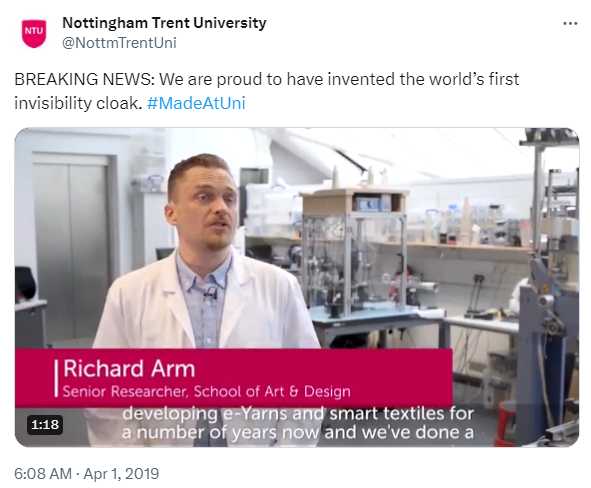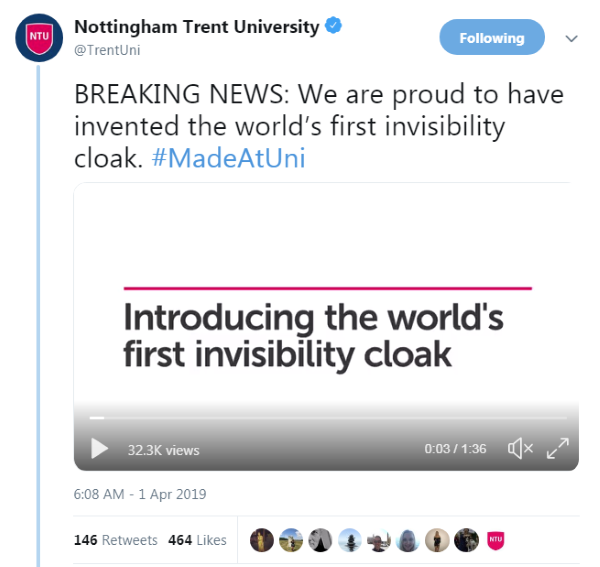Howlers, Marauder’s Maps, Sneakoscopes, Sorting Hats…of all the wondrous creations to come out of the Wizarding World of Harry Potter, the Invisibility Cloak has to be up there as the most coveted of magical items. So, on April 1st when we heard that Nottingham Trent University had developed the technology to make the invisibility cloak a reality, we wanted it to be true. Alas, we had fallen victim to a rather excellent (and very detailed) April Fools prank.
The university issued a press release detailing the "ground-breaking" i-Yarn technology behind the cloak, stating:
"A team from the Advanced Textiles Research Group have embedded miniaturized semiconductors in the yarn of clothes which are so small that they cannot be felt or seen by the wearer.
A prototype cloak has been embedded with 250 micro-controllers, which act like tiny cameras, and detect the ambient light spectrum surrounding the wearer.
This light spectrum is then projected via 3,000 miniaturized photonic devices, also embedded in the cloak, which show the image that is captured on the other side with pinpoint accuracy.
The effect is that the cloak is at all times projecting the images which surround it, giving an illusion of invisibility.
The technology – named i-Yarn – is the first of its kind and has been patented by the university, allowing the institution to transparently reveal the technology today."
Sounds plausible right? The university also went to the trouble of creating a pretty impressive video showcasing the incredible technology (Watch it here).

Invisibility cloak (View tweet here: https://twitter.com/TrentUni/status/1112582540064448513 )
This was clearly a very well thought out April Fools’ Day prank but the University tied the press release back to their incredible textile research including their research into developing “Flea-sized solar panels embedded in CLOTHES which can charge a mobile phone.” I mean, even Harry Potter didn’t have that!
Lots of universities around the globe took part in April Fool’s Day mischief. Another one of our favorites had to be Queen’s University Belfast who claimed to have released an app called "Petcentage" which would identify the facial similarities between humans and their pet cats and dogs.
Let us know, what lengths did your university go to in order to prank your students?

:format()//media/April-Fools-2019---REQ.png)
